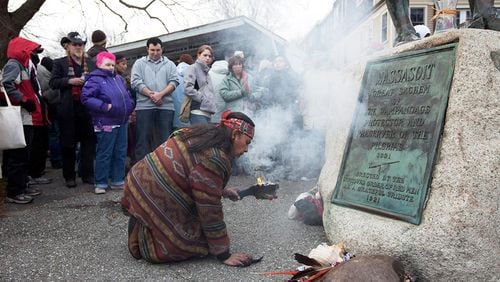Members of Native American tribes from around New England gathered Thursday in Plymouth, Massachusetts, the town where the Pilgrims settled, for a solemn observance of National Day of Mourning.
Thursday's gathering served to acknowledge and remember the disease, racism and oppression that European settlers brought.
This year was the 48th year that the United American Indians of New England organized the event on Thanksgiving Day.
Moonanum James, a co-leader of the group, said native people have no reason to celebrate the arrival of the Pilgrims in 1620.
"We say, 'no thanks, no giving,'" he said.
Along with prayers and public speeches, participants condemned environmental degradation and government restrictions on immigration. They also planned a "stomp dance" to symbolically stomp out opioid addiction, which has ravaged many native communities.
About the Author






